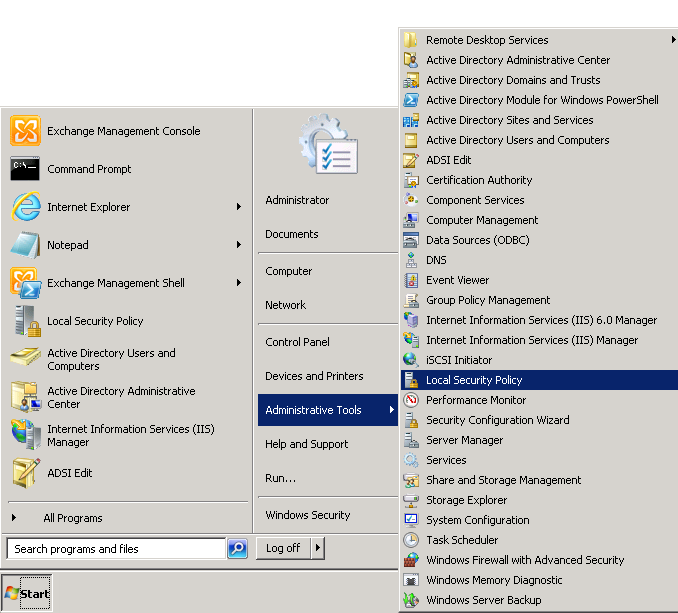
.png)
- #Authentication security policy how to
- #Authentication security policy update
- #Authentication security policy software
- #Authentication security policy windows
Members of this security group can authenticate only using Kerberos (NTLM, Digest Authentication or CredSSP are not allowed).
#Authentication security policy windows
To check how the authentication without NTLM will work for different apps in your domain, you can add user accounts to the “Protected Users” domain group (it is available since Windows Server 2012 R2).
#Authentication security policy how to
How to Completely Restrict NTLM in Active Directory Domain? Ideally, this exception list should be empty. Add the names of the servers, on which NTLM authentication can be used, to the list of exceptions as well. To do it, the Network security: Restrict NTLM: Add server exceptions for NTLM authentication in this domain policy is used. This will allow them to use NTLM authentication, even if it is disabled at the domain level. Those apps that cannot use Kerberos may be added to the exceptions. If you specify the IP address when connecting to your resources, the NTLM authentication is used. You need to use a DNS name of your server instead of its IP address for Kerberos authentication.
#Authentication security policy software
It is all about detecting what apps are using NTLM authentication, and now you have the relevant method to identify this software and devices. From my own experience, I see that even large commercial products are still using NTLM instead of Kerberos, some products require updates or configuration changes.

Some applications require to be slightly reconfigured to use Kerberos authentication (see the articles Kerberos Authentication in IIS, How to configure different browsers for Kerberos authentication?). Out-File -FilePath $NewOutputFile -InputObject "$($Event.EventID), $($Event.MachineName), $($Event.TimeGenerated), $($Event.ReplacementStrings),($ssage)" -AppendĪfter you have found users and applications that are using NTLM in your domain, try switching them to using Kerberos (possibly using SPN). Write-Host $DC.HostName $Event.EventID $Event.TimeGenerated $Events = Get-EventLog "Security" -After $Yesterday.Date -Before $Now.Date -ComputerName $DC.HostName -Message "*V1*" -instanceid 4624 Write-Host "Searching log on " $DC.HostName $NewOutputFile = "c:\Events\$($Yesterday.ToString('yyyyddMM'))_AD_NTLMv1_events.log" Thus, you have to detect all servers/applications that are using the legacy protocol.įor example, to search for all NTLMv1 authentication events on all domain controllers, you can use the following PowerShell script:

This line shows, which protocol (LM, NTLMv1 or NTLMv2) has been used for authentication. Look at the value of Package Name (NTLM only). If there is NTLM in the Authentication Package value, than the NTLM protocol has been used to authenticate this user. Please note the information in the “ Detailed Authentication Information” section. You need to search for the events from the source Microsoft-Windows-Security-Auditing with the Event ID 4624 – “ An Account was successfully logged on“. You can analyze the events on each server or collect them to the central Windows Event Log Collector. In the same way enable the policy Network Security: Restrict NTLM: Audit Incoming NTLM Traffic and set its value to Enable auditing for domain accounts.Īfter enabling these policies, the events of using NTLM authentication appear in the Application and Services Logs-> Microsoft -> Windows -> NTLM section of the Event Viewer. In the Computer Configuration -> Windows Settings -> Security Settings -> Local Policies -> Security Options section, find and enable the Network Security: Restrict NTLM: Audit NTLM authentication in this domain policy and set its value to Enable all. To track accounts or apps that are using NTLM authentication, you can enable audit logging policies on all computers using GPO. How to Enable NTLM Authentication Audit Logging?īefore you can completely disable NTLM in your domain and switching to Kerberos, make sure that there are no apps left in the domain that require and use NTLM authentication.

#Authentication security policy update
In this case, you will have to update or configure them in a special way to switch to Kerberos. The main risk of disabling NTLM is the potential usage of legacy or incorrectly configured applications that can still use NTLM authentication. NTLMv2 is a more secure authentication protocol, but it is much behind Kerberos in terms of security (although there are fewer vulnerabilities in NTLMv2 than in the NTLMv1, but there is still a chance of capturing and reusing data, as well as it doesn’t support mutual authentication). If you have made sure that you are not using NTLMv1, you can go further and try to disable the NTLMv2. Don’t forget to apply this policy to your domain controllers.


 0 kommentar(er)
0 kommentar(er)
